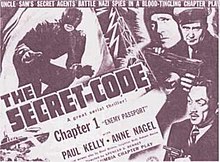
The Masked Marvel (1943) is a 12-chapter film serial created by Republic Pictures, who produced many other well known serials. It was Republic's thirty-first serial, of the sixty-six they produced.

Zombies of the Stratosphere is a 1952 colorless Republic Studios serial directed by Fred C. Brannon, with a screenplay by Ronald Davidson, and special effects by Republic's Lydecker brothers. It was intended to be Republic's second serial featuring "new hero" Commando Cody and the third 12-chapter serial featuring the rocket-powered flying jacket and helmet introduced in King of the Rocket Men (1949). Instead, for reasons unknown, the hero was renamed "Larry Martin", who must prevent Martian invaders from using a hydrogen bomb to blow Earth out of its orbit, so that the Martians can move a dying Mars into a much closer orbital position to the Sun. As in Radar Men from the Moon, much of the screen time for each of the dozen chapters is spent on fistfights and car chases between the heroes and a gang of earthly crooks hired by renegade scientist Dr. Harding and his extraterrestrial colleague Marex to steal and stockpile the Atomic supplies needed for construction of the H-bomb.

King of the Royal Mounted (1940) is a Republic Pictures northern serial based on the King of the Royal Mounted comic strip directed by William Witney and John English.

King of the Texas Rangers (1941) is a Republic film serial. Set in the years prior to America entering World War II, the plot is slightly anachronistic in that the serial features a mix of period western and modern elements, which was not unknown in the B-Western films also produced by Republic. Although the serial's plot involves cowboys battling Axis agents in Texas. Nazis are never named as such but their presence is strongly implied within the serial.
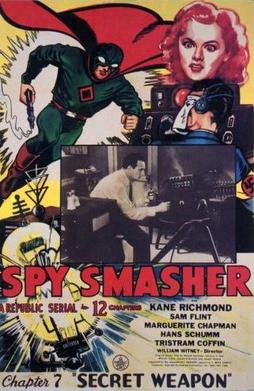
Spy Smasher is a 12-episode 1942 Republic serial film based on the Fawcett Comics character Spy Smasher which is now a part of DC Comics. It was the 25th of the 66 serials produced by Republic. The serial was directed by William Witney with Kane Richmond and Marguerite Chapman as the leads. The serial was Chapman's big break into a career in film and television. Spy Smasher is a very highly regarded serial. In 1966, a television film was made from the serial footage under the title Spy Smasher Returns.
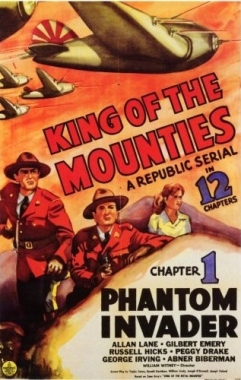
King of the Mounties is a 1942 Republic 12-chapter film serial, directed by William Witney. Allan Lane played Sgt. Dave King of the Mounties, with Peggy Drake as heroine Carol Brent, and Abner Biberman played the villainous Japanese admiral Yamata.
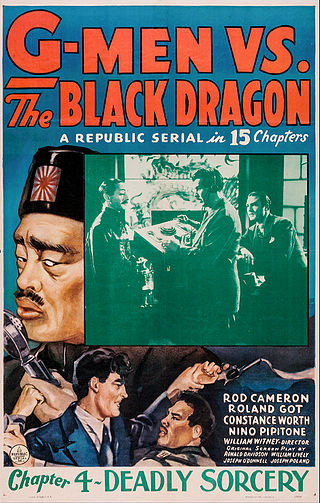
G-Men vs. The Black Dragon (1943) is a Republic Pictures movie serial. It is noteworthy among adventure serials as containing an unusually high number of fistfights, all staged by director William Witney and a team of stuntmen.

Secret Service in Darkest Africa is a 1943 Republic serial. It was Republic's thirtieth serial, of the sixty-six produced by the studio.

Flying Disc Man from Mars is a 1950 Republic Pictures 12-chapter black-and-white science fiction adventure film serial, produced by Franklin Adreon, directed by Fred C. Brannon, that stars Walter Reed, Lois Collier, Gregory Gaye, James Craven, Harry Lauter, and Richard Irving. Disc Man is considered a weak example of the serial medium, even compared to other post-World War II serials. In 1958 Republic edited the serial's 167 minutes of footage into a 75-minute feature, released under the new title Missile Monsters.

Captain America is a 1944 Republic black-and-white 15-chapter serial film loosely based on the Timely Comics character Captain America. It was the last Republic serial made about a superhero. It also has the distinction of being the most expensive serial that Republic ever made. It stands as the first theatrical release connected to a Marvel character; the next theatrical release featuring a Marvel hero would not occur for more than 40 years. It was the last live-action rendition of a Marvel character in any medium until Spider-Man appeared in the Spidey Super Stories segment of the children's television series The Electric Company in 1974.
The Green Hornet is a 1940 black-and-white 13-chapter movie serial from Universal Pictures, produced by Henry MacRae, directed by Ford Beebe and Ray Taylor, starring Gordon Jones, Wade Boteler, Keye Luke, and Anne Nagel. The serial is based on The Green Hornet radio series by George W. Trendle and Fran Striker.
Don Winslow of the Navy is a 1942 Universal Pictures Serial film based on the comic strip Don Winslow of the Navy by Commander Frank V. Martinek. It was theatrically released in January 1942.

The Adventures of Smilin' Jack (1943) is a Universal movie serial based on the popular comic strip The Adventures of Smilin' Jack by Zack Mosley. It was directed by Lewis D. Collins and Ray Taylor.

Adventures of the Flying Cadets is a 13-episode 1943 Universal film serial directed by Ray Taylor and Lewis D. Collins.

Brick Bradford (1947) was the 35th serial released by Columbia Pictures. It was based on the comic strip Brick Bradford, which was created by Clarence Gray and William Ritt.

The Spider's Web is a 1938 Columbia Pictures movie serial based on the popular pulp magazine character The Spider. The first episode of this 15-chapter serial was double-length and directed by serial and western specialist Ray Taylor and by comedy and serial veteran James W. Horne; it was the fifth of the 57 serials released by Columbia.

The Spider Returns is a 1941 15-chapter Columbia movie serial based on the pulp magazine character The Spider. It was the fourteenth of the 57 serials released by Columbia and a sequel to their 1938 serial The Spider's Web. The first episode runs 32 minutes, while the other 14 are approximately 17 minutes each.

The Shadow (1940) was the ninth serial released by Columbia Pictures. It was based upon the classic radio series and pulp magazine superhero character of the same name.
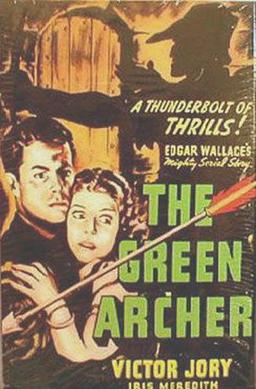
The Green Archer is the 12th serial released by Columbia Pictures. It was based on Edgar Wallace's 1923 novel The Green Archer, which had previously been adapted into the silent serial of the same name in 1925 by Pathé Exchange.
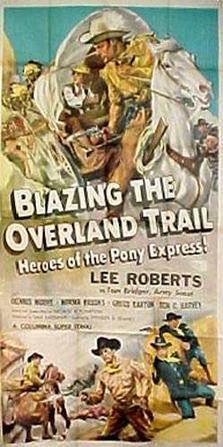
Blazing the Overland Trail is a 1956 American Western Serial film directed by Spencer Gordon Bennet and starring Lee Roberts. It was the 57th and last serial produced by Columbia and the last American serial ever produced by any studio. Republic Pictures, the only other serial-producing US studio in the mid 1950s, had ceased its serial production the previous year with King of the Carnival.
